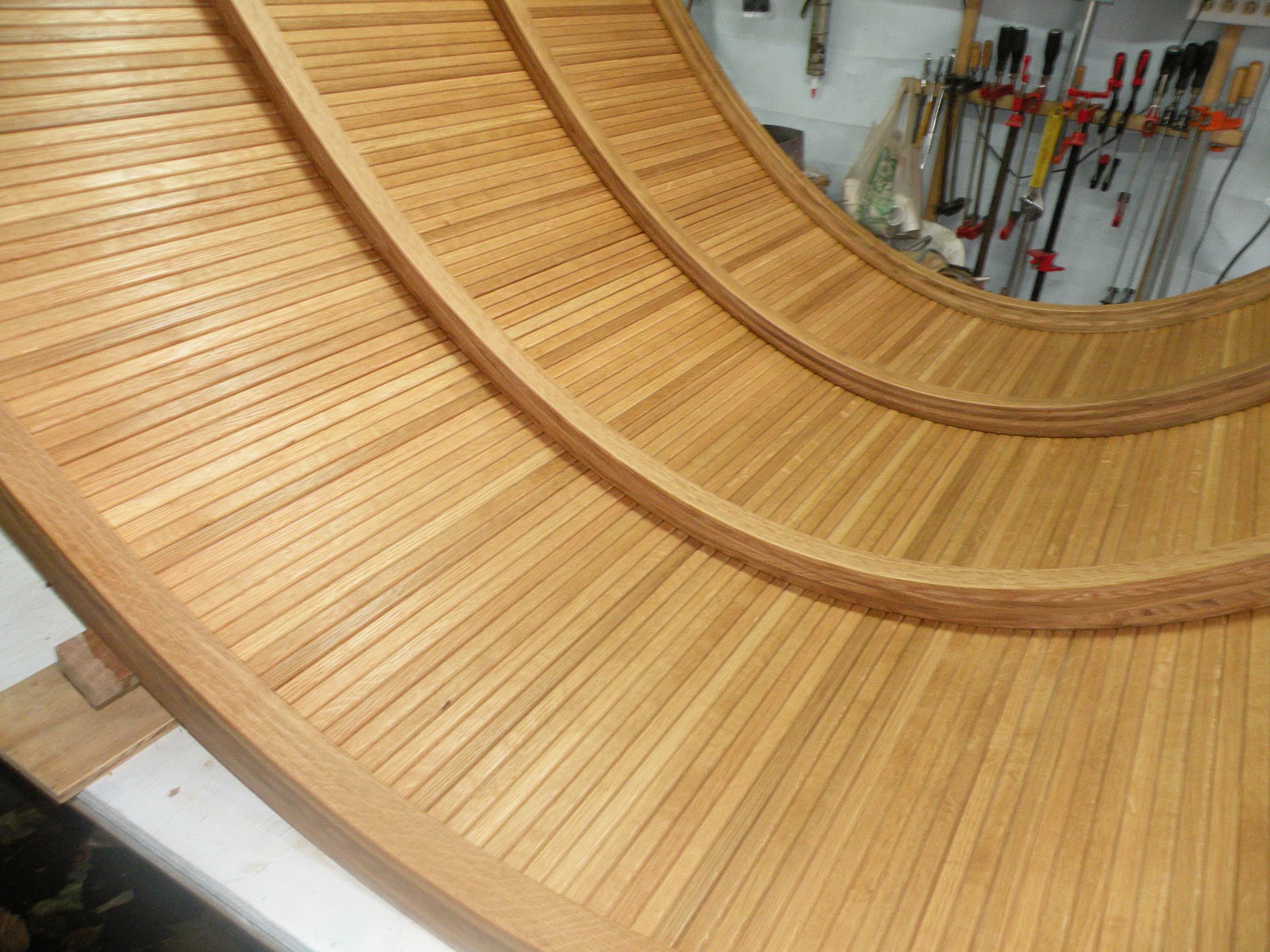The hatch has been a long time in coming, but has arrived.
Our last post showed the "first fit" of the outer frame to the opening. Next, we returned the hatch to the table jig and began fitting the inner ribs.
Fitting the inner ribs meant not only cutting them to the proper lengths with the proper end points and angles but getting them profiled to the proper thicknesses in order to maintain the correct profile for the slat application.
Once that was accomplished we began the permanent assembly of the frame and ribs.
Below the full frame, with temporary spreaders, is shown in situ.
Note that the bottom spreader is not parallel/at right angles to the balance of the structure.
With the framing fit to the actual location we added a 1/4" plywood/hardwood spreader jig to the hatch in order to retain the fit.
The theory was that this addition would lock the hatch's orientation to the opening, and it so far appears to performed as expected.
The next step was to return the hatch frame to the table jig and begin installing the "beadboard", inappropriately named since the intervening bead was omitted due to the narrow width of the part.
Sean devised an ingenious glue pot and gun assembly that permitted dispensing a metered amount of glue into the groove of each piece. Each slat was then placed on the hatch and air-nailed in place.
Above is a view of the glue gun applying a bead of glue into the groove of a slat. Without this tool we would have spent countless hours applying the glue and wiping the overspread from the finished product. As it was, the application was expeditious and with minimal overspread.
Above is a view of the inside at the end of day one, with the plywood jig still in place.
By the end of day two the application of 117 slats was complete. We will still need to apply a layer of 1/8" baltic birch plywood to the exterior for structure, but the inside is revealed.
The
view of the inside shown above will be visible when the hatch is open.
I truly love the result, even without urethane to enhance the oak.
In the views shown, the hatch top is to the right and the bottom to the left.
The sad part is that, once the plywood is installed on the outside of the hatch, we will wind down for the season, preparing to store the trailer for the winter season and dismantle the "party tent" for fear that snow load would compromise it. Add to that fear the fact that temperatures are getting to be too low for glue and finishes, and we have concluded that the best course of action is to put the project away for a few months.
More soon ....


















































